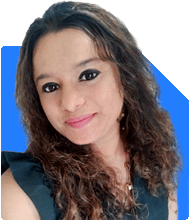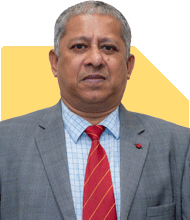Ramalingam Kalirajan |9752 Answers |Ask -Follow
Mutual Funds, Financial Planning Expert - Answered on Oct 04, 2024
He has an MBA in finance from the University of Madras and is a certified financial planner.
He is the director and chief financial planner at Holistic Investment, a Chennai-based firm that offers financial planning and wealth management advice.... more

Dear I want to get annual interest about 1.2 l monthly age 47, I have 1.2 cr , 50 l pf, 16 l ppf, 16 l nps, 8 l ssa, 12 l equity, 4 l mutual, 12 l home loan. Suggest how to achieve the same
Rs 1.2 crore available for investment
Rs 50 lakh in Provident Fund (PF)
Rs 16 lakh in Public Provident Fund (PPF)
Rs 16 lakh in National Pension Scheme (NPS)
Rs 8 lakh in Sukanya Samriddhi Account (SSA)
Rs 12 lakh in equity
Rs 4 lakh in mutual funds
Rs 12 lakh in home loan debt
Your goal is to generate Rs 1.2 lakh as monthly interest or returns. We can create a strategic plan to meet this target, using a combination of debt and equity investments.
Analyzing Your Monthly Income Target
To generate Rs 1.2 lakh in monthly returns, you need to earn Rs 14.4 lakh per year. Considering inflation and future expenses, a combination of conservative and growth-oriented investments would be necessary. Let’s break this down:
Debt and Fixed-Income Investments
Public Provident Fund (PPF)
Your PPF already has Rs 16 lakh. Continue investing in this tax-saving and secure option. PPF offers a stable, tax-free return. You can consider extending your PPF account after its maturity to keep benefiting from its safety.
Provident Fund (PF)
The Rs 50 lakh in your Provident Fund will provide stability and safety. This amount can continue growing at the EPF rate, and you can also partially withdraw post-retirement for emergency use or to pay off your home loan.
Consider using this fund for long-term security rather than current income.
Sukanya Samriddhi Account (SSA)
Since this account is meant for your daughter’s education or marriage, it should be left untouched for its purpose. However, it’s a safe instrument that will continue to grow at a steady rate. You can plan withdrawals when needed.
Debt Mutual Funds
While you hold Rs 4 lakh in mutual funds, you can invest a part of your Rs 1.2 crore into debt mutual funds. These funds offer better returns than fixed deposits and are more tax-efficient if held for over three years. Debt funds also provide liquidity and the ability to switch between funds based on market conditions.
Avoid large exposure to debt mutual funds due to tax implications. Focus on long-term capital gains by holding investments for over three years to benefit from indexation.
Home Loan
Your Rs 12 lakh home loan can be paid off using either your Provident Fund or a portion of the Rs 1.2 crore. Clearing your home loan early will save you from paying interest, and this freed-up cash flow can be reinvested for higher returns.
Growth-Oriented Investments
Equity Mutual Funds
You already have Rs 12 lakh in equity and Rs 4 lakh in mutual funds. Equity mutual funds should form a large part of your Rs 1.2 crore portfolio.
These funds are suitable for wealth creation in the long term, given the high historical returns. An aggressive portfolio with exposure to large-cap, mid-cap, and small-cap funds will help you build a substantial corpus over time.
Aim for at least 60% equity exposure for higher growth, while 40% can be allocated to debt and fixed income for stability.
Systematic Withdrawal Plans (SWP)
You can invest a portion of your Rs 1.2 crore into mutual funds and use an SWP to generate regular monthly income. SWP allows you to withdraw a fixed amount every month while the remaining corpus continues to grow. This can be a tax-efficient way to draw income.
Select actively managed funds through a certified mutual fund distributor for better performance and expert guidance. These funds will help you manage market volatility better than direct investments.
Balanced Advantage Funds
Balanced Advantage Funds automatically adjust the allocation between equity and debt based on market conditions. This type of fund provides stability during volatile periods while allowing you to benefit from equity growth.
You could allocate 20-30% of your Rs 1.2 crore to such funds to ensure a steady flow of income along with capital appreciation.
National Pension Scheme (NPS)
NPS offers a great combination of equity and debt investments. Your current Rs 16 lakh in NPS can be left to grow further. Post-retirement, this amount will provide you with an annuity income.
You can also make additional voluntary contributions to your NPS account to boost your pension corpus. However, NPS withdrawals at maturity are partially taxable, so plan accordingly.
Clearing Home Loan
The Rs 12 lakh home loan should be paid off to reduce your liabilities. The sooner you close it, the more cash flow you free up. This will allow you to reinvest that amount in better-yielding assets.
You could use part of your Rs 1.2 crore corpus or withdraw from your Provident Fund to close this loan. Clearing debt gives you peace of mind and removes the burden of monthly EMIs.
Tax Planning
Equity Mutual Fund Taxation
Be mindful of the tax implications when withdrawing from your equity mutual funds. Long-term capital gains (LTCG) over Rs 1.25 lakh are taxed at 12.5%, while short-term capital gains (STCG) are taxed at 20%. Plan your withdrawals accordingly to minimise tax.
Debt Fund Taxation
Debt mutual funds are taxed based on your income slab for both LTCG and STCG. Holding them for over three years will help you avail of indexation benefits, reducing the tax burden.
NPS Taxation
NPS allows tax deductions under Section 80C and 80CCD. However, withdrawals at maturity are partially taxable. To maximise tax savings, stagger your withdrawals over the years.
Creating a Balanced Portfolio
To achieve Rs 1.2 lakh monthly income, your portfolio must balance growth and safety. Here's a suggested allocation:
40% in equity mutual funds for growth
30% in debt mutual funds and bonds for steady income
10% in balanced advantage funds for automatic risk management
20% in safe options like PPF, NPS, and SSA for security
This mix will help you generate regular income while ensuring your capital grows.
Monitoring and Rebalancing
Your portfolio should be regularly monitored and rebalanced. As market conditions change, adjust the allocation between equity and debt to maintain optimal performance. A Certified Financial Planner can help guide you through this process.
Ensure that your equity investments are actively managed for better returns. Actively managed funds allow expert fund managers to select the best opportunities, giving you an edge over passive index funds.
Emergency Fund
It’s important to keep an emergency fund aside. Consider setting aside Rs 10-15 lakh in a liquid mutual fund or high-interest savings account. This fund will cover unforeseen expenses, such as medical emergencies or sudden needs, without disturbing your long-term investments.
Insurance Coverage
While the focus is on generating income, don’t forget to assess your insurance needs. Ensure you have adequate life insurance coverage for your dependents, and consider health insurance for medical expenses. Insurance provides a safety net for your family and protects your investments.
Final Insights
Generating Rs 1.2 lakh monthly income from Rs 1.2 crore and other investments requires careful planning. Balancing growth with safety is key. By investing in equity mutual funds, debt funds, and safe instruments like PPF and NPS, you can create a sustainable income stream.
Monitor your portfolio and make adjustments as needed. Clearing your home loan will free up cash flow and provide peace of mind. Avoid high taxation by planning your withdrawals and ensuring you have a diversified investment mix.
By following these steps, you will be on track to meet your financial goals and secure a comfortable future for yourself and your family.
Best Regards,
K. Ramalingam, MBA, CFP,
Chief Financial Planner,
www.holisticinvestment.in
https://www.youtube.com/@HolisticInvestment
You may like to see similar questions and answers below
Nikunj Saraf | Answer |Ask -Follow
Mutual Funds Expert - Answered on Nov 30, 2022
Jinal Mehta |103 Answers |Ask -Follow
Financial Planner - Answered on Feb 25, 2024
Ramalingam Kalirajan |9752 Answers |Ask -Follow
Mutual Funds, Financial Planning Expert - Answered on Jul 25, 2024
Ramalingam Kalirajan |9752 Answers |Ask -Follow
Mutual Funds, Financial Planning Expert - Answered on Jul 17, 2024
Ramalingam Kalirajan |9752 Answers |Ask -Follow
Mutual Funds, Financial Planning Expert - Answered on Jul 22, 2024
Prof Suvasish Mukhopadhyay |2613 Answers |Ask -Follow
Career Counsellor - Answered on Jul 15, 2025
Prof Suvasish Mukhopadhyay |2613 Answers |Ask -Follow
Career Counsellor - Answered on Jul 15, 2025
Prof Suvasish Mukhopadhyay |2613 Answers |Ask -Follow
Career Counsellor - Answered on Jul 15, 2025
Prof Suvasish Mukhopadhyay |2613 Answers |Ask -Follow
Career Counsellor - Answered on Jul 15, 2025
Prof Suvasish Mukhopadhyay |2613 Answers |Ask -Follow
Career Counsellor - Answered on Jul 15, 2025
Prof Suvasish Mukhopadhyay |2613 Answers |Ask -Follow
Career Counsellor - Answered on Jul 15, 2025
Prof Suvasish Mukhopadhyay |2613 Answers |Ask -Follow
Career Counsellor - Answered on Jul 15, 2025
Prof Suvasish Mukhopadhyay |2613 Answers |Ask -Follow
Career Counsellor - Answered on Jul 15, 2025
Prof Suvasish Mukhopadhyay |2613 Answers |Ask -Follow
Career Counsellor - Answered on Jul 15, 2025
Prof Suvasish Mukhopadhyay |2613 Answers |Ask -Follow
Career Counsellor - Answered on Jul 15, 2025



















